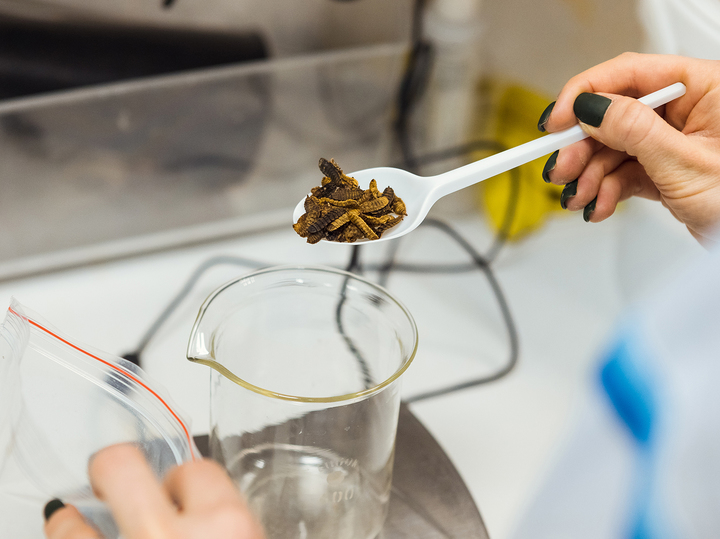Russian scientists raised fly larvae to feed cows
[ad_1]
The new food is superior in protein content to vegetable food
The technology for growing high-protein larvae of black soldier flies was proposed by scientists from St. Petersburg. This will become an alternative to plant crops for feeding cattle
As MK was told at the University of Information Technologies, Mechanics and Optics, a controlled system for growing black soldier fly larvae has been created here. Thanks to specially selected breeding conditions and special food, black soldier fly larvae grow with a high protein content. In addition, it is absorbed from them much better – by 90%, while from traditional sources – soybeans, corn, clover or peas it is absorbed by 70-80%. In addition, the protein from the larvae contains amino acids – tryptophan, phenylalanine and methionine, which are beneficial for the nervous system and hair growth.
Help “MK”. The black soldier fly is a species of fly that is safe for humans and reproduces well in artificial conditions. One adult can produce about 500–600 eggs, from which larvae grow in 25 days.
Scientists selected black soldier fly larvae for their ability to convert organic waste (expired food, wastewater treatment plant waste, manure) into useful nutrients. In addition to chitin, which is used in medicine and the food industry, fats are obtained from insects that have gained mass, which are used for the production of biodiesel and an analogue of palm oil in cosmetology, and proteins. The latter are obtained by drying defatted larvae and grinding them into powder.
However, to obtain biomass with a guaranteed high protein content, it was necessary to select ideal conditions for the growth of larvae.

“When raising insects, we encounter difficulties,” explains Nelly Molodkina, head of the laboratory at the Faculty of Environmental Technologies. “For example, adults may not produce offspring, or larvae will contain different amounts of proteins and lipids because some were fed brewer’s grain, others were fed chocolate, and others were fed oranges.”
For three years, the researchers selected the optimal food and conditions for the growth and development of the larvae, and they were offered a variety of “dishes” to choose from. As a result, we came to the conclusion that crackers and wheat bran help best in gaining weight and useful components. If ordinary larvae contain about 35–40% protein, then after feeding with grain waste its share increases to 60%.
In the future, scientists plan to mix the substrates that showed the best results with other waste – fruits, vegetables and brewer’s grains (the grounds remaining after boiling barley wort).
[ad_2]
Source link








